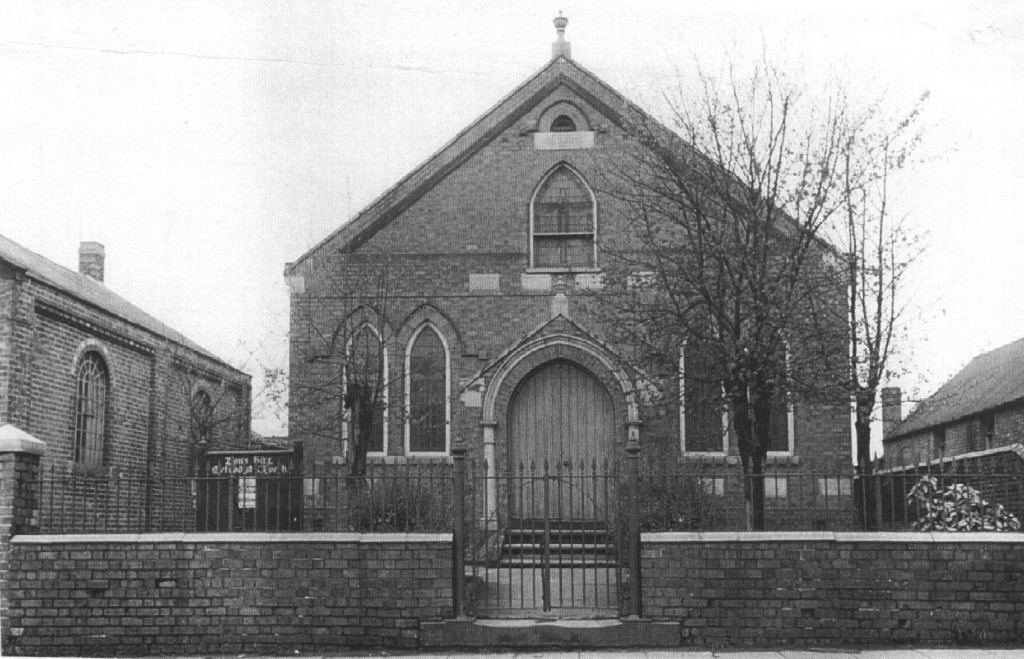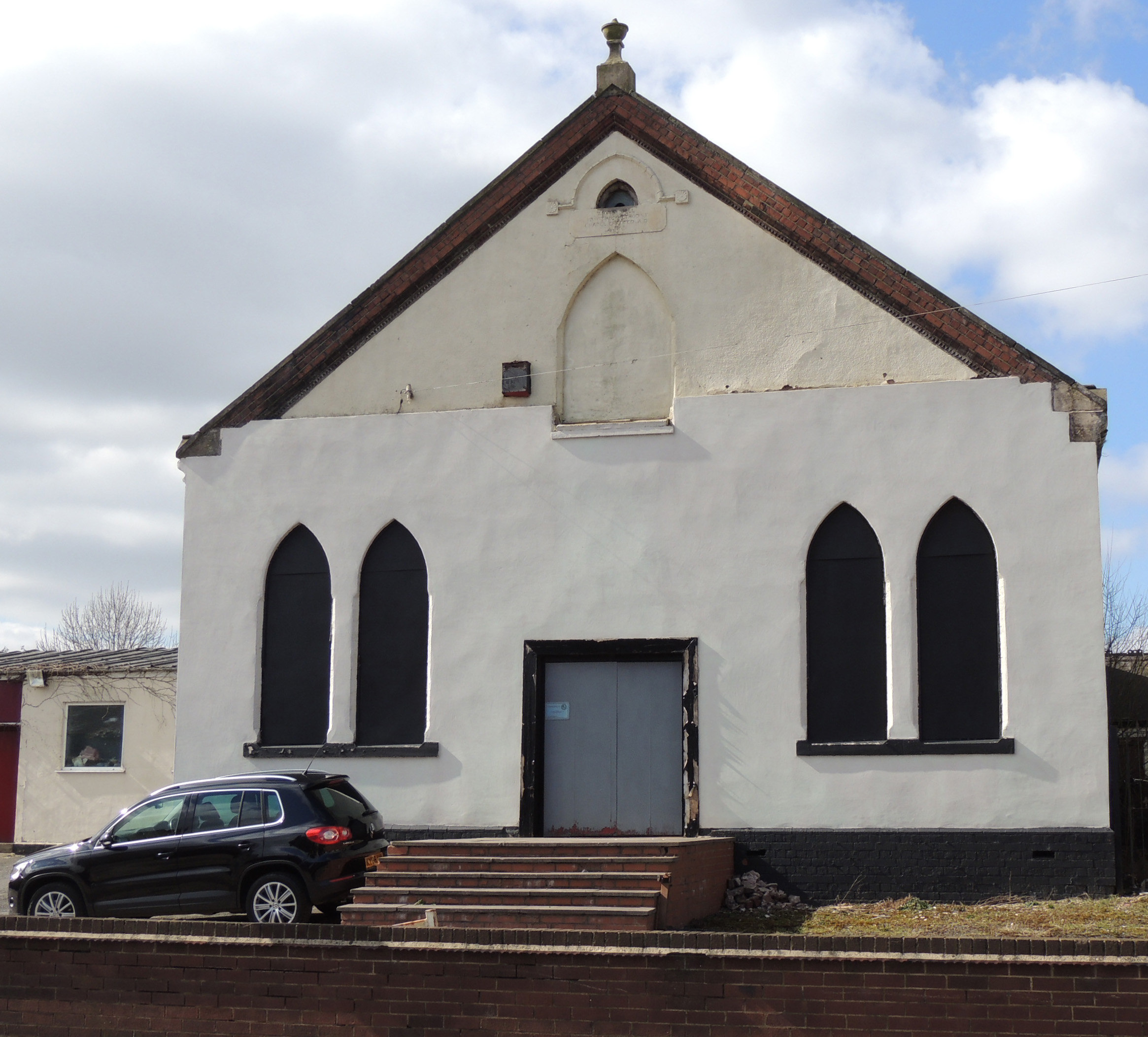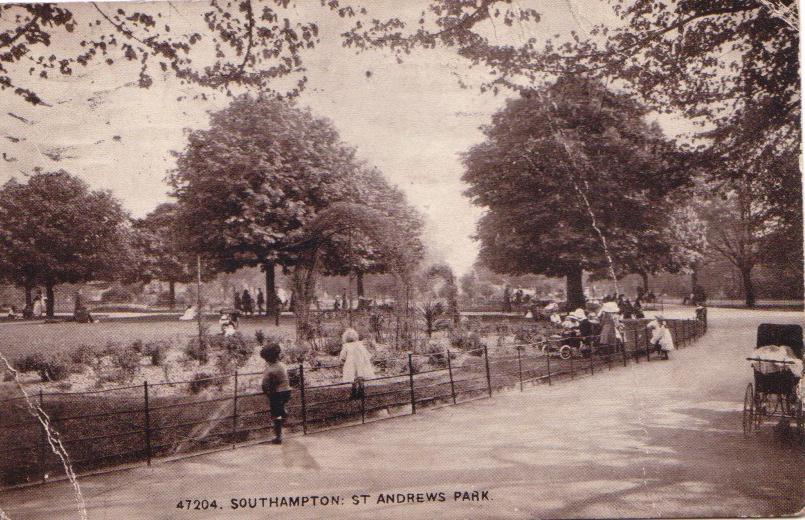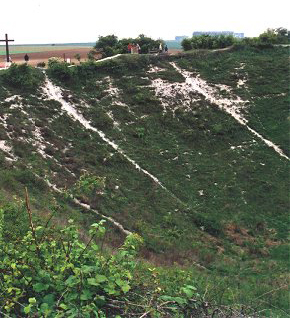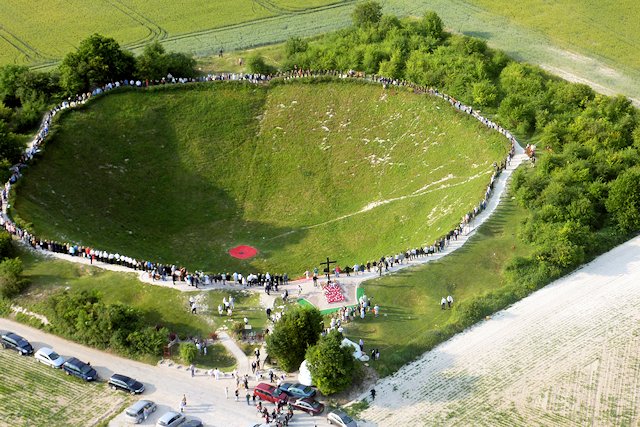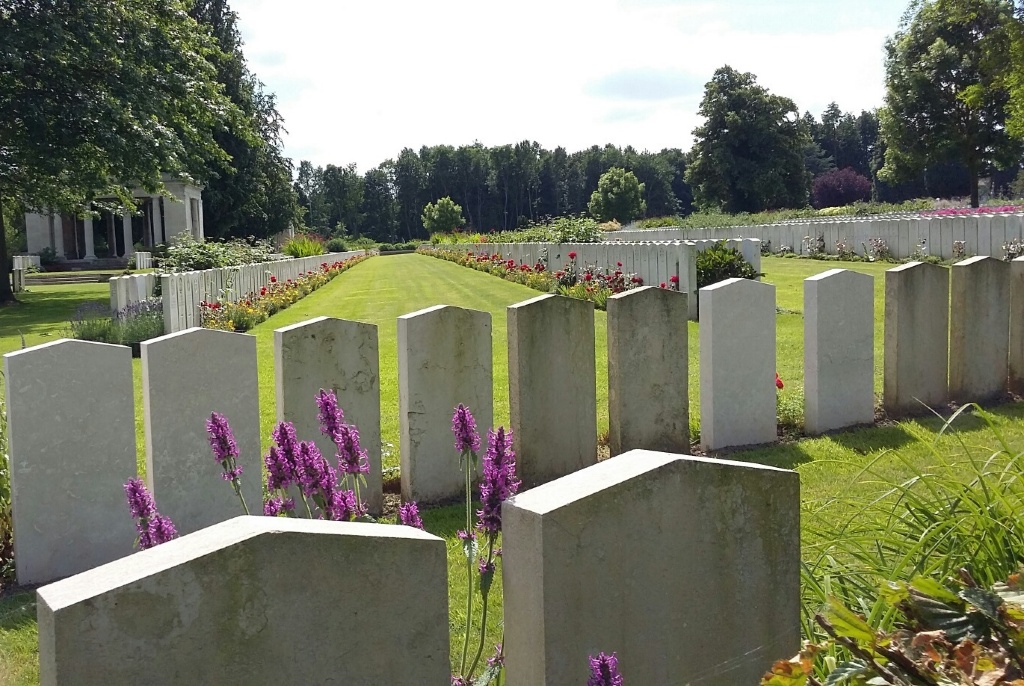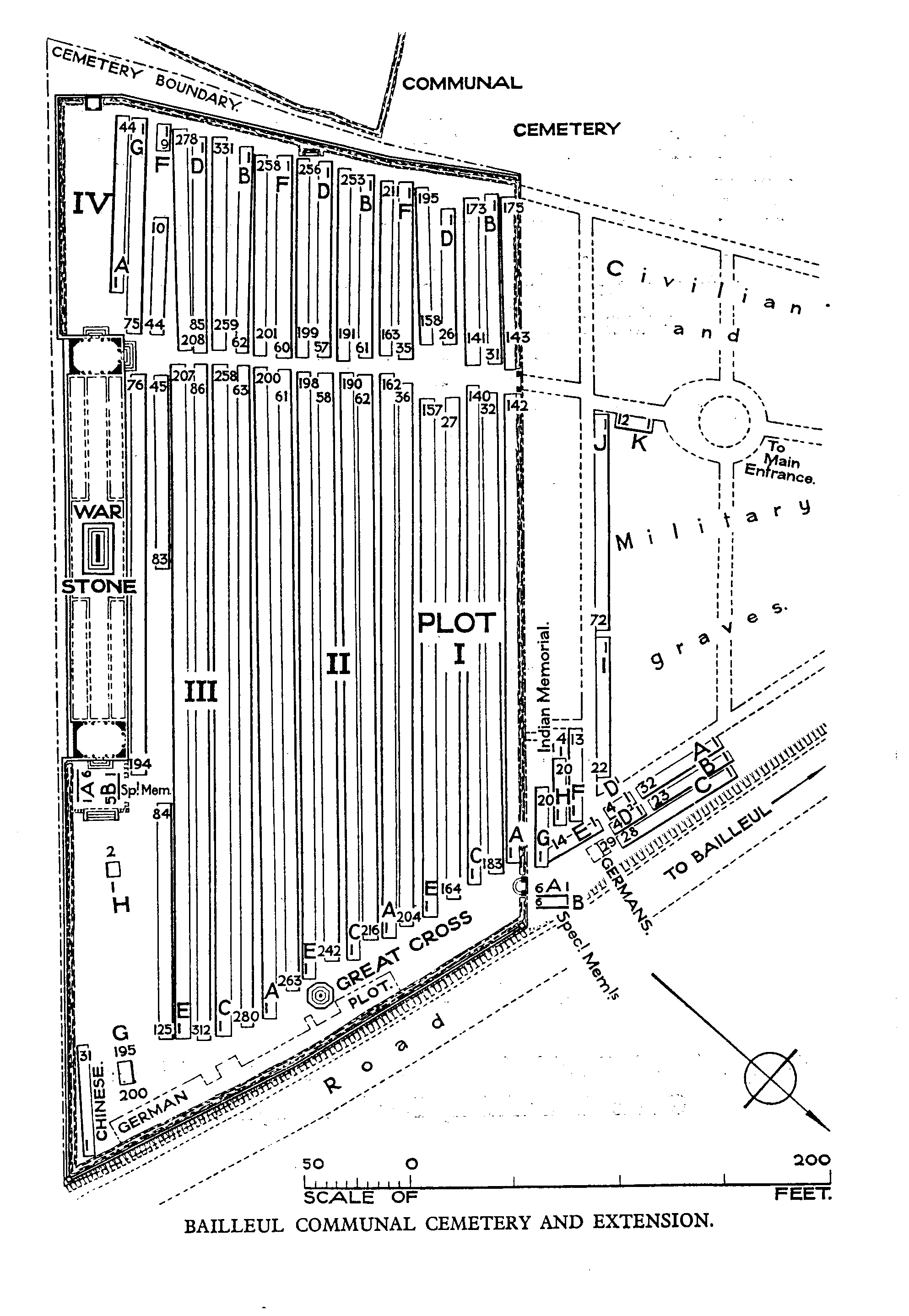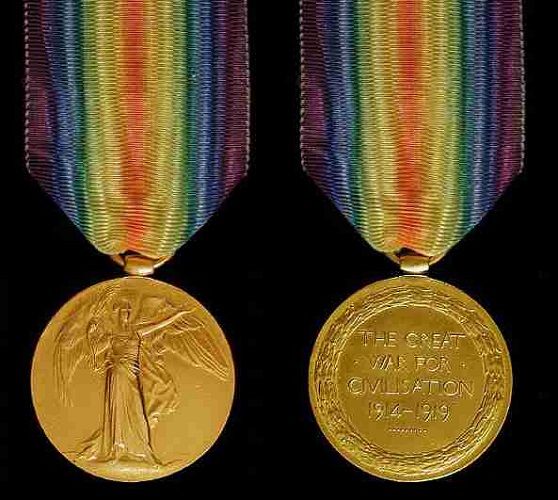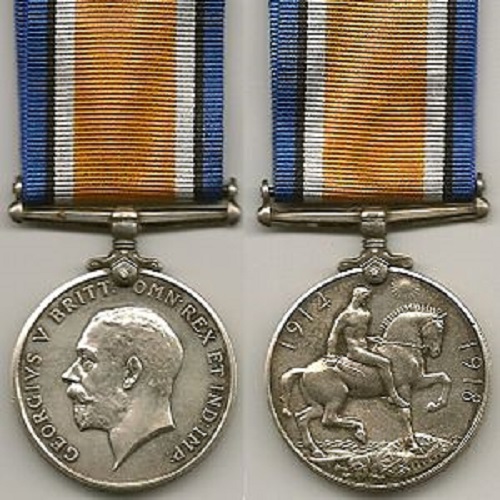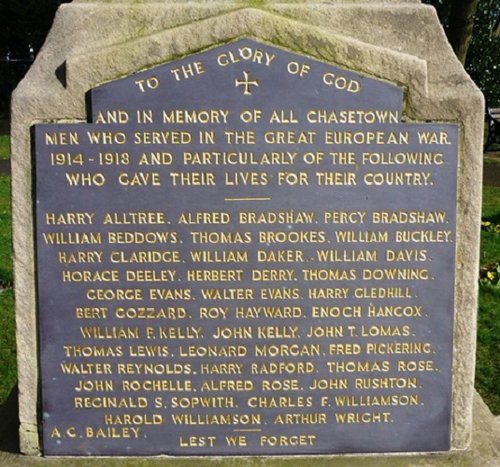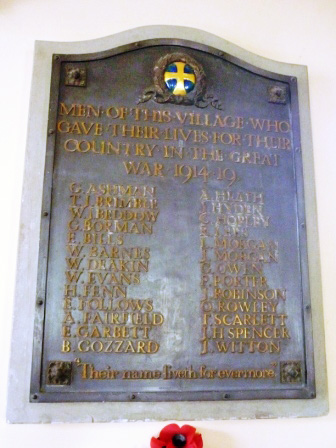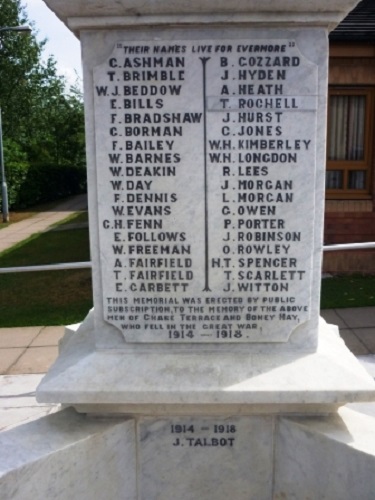WALTER EVANS
1875 - 5 JUNE 1917
Researched and written by Steve BAILEY
Walter Evans was born in 1875 to Enoch & Emma Evans in Dawley, Shropshire, they moved into Ironstone Road, Chase Terrace sometime between 1878 & 1881. There was an influx of miners & their families with the decline of the mines in that area & the expansion of coal mining in this area.
Walter's parents, Enoch and Emma EVANS
Picture 1
Walter was the eldest of 5 children; he had 3 brothers, Enoch, William & Joseph & 1 sister, Ethel May. They would probably have attended №1School in Rugeley Road, Chase Terrace before leaving to find work, the boys probably following in their father’s footsteps down the local coal mines. Ethel would have probably gone into domestic service or as an assistant in one of the local shops.
Burntwood No. 1 School
Picture 2
Walter grew up, stayed in the area & married ELIZA BENNISTON a local girl when he was 22 years of age on the 10th November 1897 in the Parish of St. Anne’s, Chasetown. His occupation was listed as a miner so he did follow in his father’s footsteps.
Walter & Eliza went on to have 9 children, 8 girls, Ethel Maud, Lily, Elsie, Emma, Mary, Marian, Gladys & Clara & 1 boy Arthur Victor. They appeared on the Census returns as living at 2 Queen Street, Chasetown. This would have been adjacent to where the Old Mining College now stands. The Old Mining College was built in 1912, his old house was demolished probably in the late 1940’s or early 1950’s & a pair of semi detached houses now stands there.
The junction of Queen Street and High Street, Chasetown.
Walter lived at 2 Queen Street, just out of camera shot
Picture 3
The photograph taken for the postcard above was taken sometime between 1900 & 1911. Chasetown Clock in the centre of the picture with the crowd gathered round, was erected to the memory of local soldiers who fought in the Boer War.
Walter (centre) with two of his brothers in Zion Methodist Chapel, High Street, Chasetown
Picture 4
The Zion Methodist Chapel where the photographs were taken ceased to be used for religious services in the 1960’s and was used until recently as a furniture storage warehouse by Collis and Son whose shop was next door on the left hand side. It has recently been demolished for new housing.
Walter was a staunchly religious man and a Methodist lay preacher on the circuit.
Picture 6
Picture 5
Walter was in the army in early 1916, he was 40 years old, too old for a new recruit in the infantry so with his mining background he was now 157705 Sapper Evans. W. in the 179th Tunneling Company of the Royal Engineers. Many miners with experience of working underground were recruited to work underneath the battlefields of France & Belgium. On 28th April 1916, he sent a postcard home to his wife; the postmark was Mansfield, Nottinghamshire which would suggest a training camp of some sort.
On the 30th April 1916 he sent another postcard home, this time it was a picture card of a park in Southampton saying that he was leaving for France shortly, another card followed soon afterwards showing a ship the S.S. Virginian which would suggest that this was the vessel he went to France on.
Picture 7
Picture 8
The 179th Tunneling Company of the Royal Engineers was formed in Third Army area in October 1915 & moved into Thiepval-La Boisselle sector of the Somme recently taken over by the BEF.
The 179th Tunneling Company were responsible for the Lochnagar mine detonated on 1st July 1916 at La Boisselle on the Somme, the largest surviving crater today on what was the western front. The crater measures 300 feet in diameter & is 90 feet deep.
Lochnagar Crater
Picture 10
Picture 9
The aim was to destroy large areas of enemy trenches and to disorientate the defenders. Mining warfare reached its zenith in June 1917, when 19 huge British mines blew under the Messines Ridge.
After the immense and successful demonstration at Messines of the superiority that the Tunneling Companies had achieved, there was relatively little mining activity. This was largely due to the return to a more fluid war of movement in which siege methods became irrelevant. The tunneling troops were more often engaged in construction work, and in creating underground subways for infantry to shelter in and to reach the front lines without molestation. In the crises of Spring 1918, they were often called upon to act as emergency infantry. When the tables turned and the Allies began to advance in late July 1918, they worked on making safe the many towns, villages and facilities they captured, including the very dangerous work of rendering harmless the many explosive devices that had been left behind.
Pools left by Kruisstraat Numbers 1 and 4 mines
Picture 12
Picture 11
The Messines craters still exist and are now deep pools. The photograph above shows these pools left by Kruisstraat numbers 1 and 4 mines. Tunnelers of the Royal Engineers had dug from 1500 feet from behind the British line to reach this strong point under the enemy trenches. 49500 pounds (22 Tons) of explosive, mostly ammonal, buried 57 feet below the surface, blew at 3.20am on 7 June 1917.
Unfortunately Walter did not see this as he was shot, fatally wounded on 5th June 1917 along with 136075 Corporal Frank Edden, also of the 179th Tunneling Company. Walter, aged 42 died from his wounds the following day & was buried in Bailleul Communal Cemetery Extension (Nord), Row 3, Grave B244. Corporal Frank Edden also aged 42, died 2ND September 1917 & was buried in Marengo Farm Military Cemetery the next day. Cpl Edden was later reburied in Bard Cottage Cemetery, Row 4, Grave E33. He was the son of Thomas & Charlotte Edden of Chapeltown, Sheffield, Yorks.
Picture 13
Picture 14
Bailleul is a large town in France, near the Belgian border, 14.5 Kms south-west of Ieper and on the main road from St. Omer to Lille. From the Grand Place, take the Ieper road and 400 metres along this road is a sign indicating the direction of the cemetery. Turn right into a small road and follow for approximately 400 metres. The cemetery is on the right and the Communal Cemetery Extension is at the bottom end.
Bailleul was occupied on 14 October 1914 by the 19th Brigade and the 4th Division. It became an important railhead, air depot and hospital centre, with the 2nd, 3rd, 8th, 11th, 53rd, 1st Canadian and 1st Australian Casualty Clearing Stations quartered in it for considerable periods. It was a Corps headquarters until July 1917, when it was severely bombed and shelled, and after the Battle of Bailleul (13-15 April 1918), it fell into German hands and was not retaken until 30 August 1918. The earliest Commonwealth burials at Bailleul were made at the east end of the communal cemetery and in April 1915, when the space available had been filled, the extension was opened on the east side of the cemetery. The extension was used until April 1918, and again in September, and after the Armistice graves were brought in from the neighbouring battlefields and the following burial grounds:- PONT-DE-NIEPPE GERMAN CEMETERY, on the South side of the hamlet of Pont-de-Nieppe, made in the summer of 1918. It contained German graves (now removed) and those of a soldier and an airman from the United Kingdom. RENINGHELST CHINESE CEMETERY, in a field a little South of the Poperinghe-Brandhoek road, where 30 men of the Chinese Labour Corps were buried in November 1917-March 1918. BAILLEUL COMMUNAL CEMETERY contains 610 Commonwealth burials of the First World War; 17 of the graves were destroyed by shell fire and are represented by special memorials. BAILLEUL COMMUNAL CEMETERY EXTENSION contains 4,403 Commonwealth burials of the First World War; 11 of the graves made in April 1918 were destroyed by shell fire and are represented by special memorials. There are also 17 Commonwealth burials of the Second World War and 154 German burials from both wars. Both the Commonwealth plot in the communal cemetery and the extension were designed by Sir Herbert Baker. In the centre of the town is a stone obelisk erected by the 25th Division as their Memorial on the Western front, recalling particularly the beginning of their war service at Bailleul and their part in the Battle of Messines. The town War Memorial, a copy of the ruined tower and belfry of the Church of St. Vaast, was unveiled in 1925 by the Lord Mayor of Bradford, the City which had "adopted" Bailleul.
157705 SAPPER W. EVANS HEADSTONE IN BAILLEUL COMMUNAL CEMETERY EXTENSION
Picture 15
WALTER’S MEDAL ROLL INDEX CARD
Picture 16
Walter’s widow Eliza would have received the medals he was entitled to after the end of the First World War.
He was posthumously awarded the Victory & British Medals.
Picture 18
Picture 17
Walter’s only son Arthur went on to marry a local girl ALICE LLOYD in St. Annes Church, Chasetown in 1944. They went on to have one child DESMOND, who contacted the BFHG about the MEMORIAL PROJECT & still lives in the area with his wife & 2 sons.
Walter EVANS is remembered on three War Memorials
Picture 19
Picture 20
Picture 21
During the course of this memorial project I have learned that I am distantly related to Walter Evans; his Father ENOCH EVANS & my Great-Grandfather NOAH BAILEY were first cousins.
Item, Source and Credit
1. Photograph Enoch and Emma EVANS © Desmond EVANS
2. Photograph Burntwood No. 1 School © Alan BETTS (BFHG)
3. Photograph High Street at Queen Street © Old UK Photos website (Wendy Jones)
4. Photograph Walter EVANS centre © Desmond EVANS
5. Photograph Zion Methodist Chapel c 1900 - 1911 © Unknown
6. Photograph Zion Methodist Chapel c 2010 © Wikimedia
7. Photograph Saint Andrews Park, Southampton © Desmond EVANS
8. Photograph The S. S. Virginian © Desmond EVANS
9. Photograph Lochnagar Crater © The Long, Long Trail website
10. Photograph Lochnagar Crater © http://www.lochnagarcrater.org/
11. Photograph Pools left by Kruisstraat Numbers 1 and 4 mines © The Long, Long Trail website
12. Photograph Pools left by Kruisstraat Numbers 1 and 4 mines © https://hiveminer.com/Tags/belgium,mines
13. Photograph Bailleul Commonwealth War Grave Cemetery © CWGC
14. Plan Bailleul Commenwealth War Grave Cemetery © CWGC
15. Photograph Walter EVANS headstone © Desmond EVANS
16. Photograph Walter EVANS Medal Roll Index Card © Ancestry
17. Photograph Victory Medal © http://www.debenhamfamilyhistory.org.uk/victorymedal.htm
18. Photograph British War Medal © Wikipedia
19. Photograph Chasetown War Memorial © Alan BETTS (BFHG)
20. Photograph Chase Terrace Methodist Church War Memorial © Alan BETTS (BFHG)
21. Photograph Chase Terrace War Memorial © Alan BETTS (BFHG)



